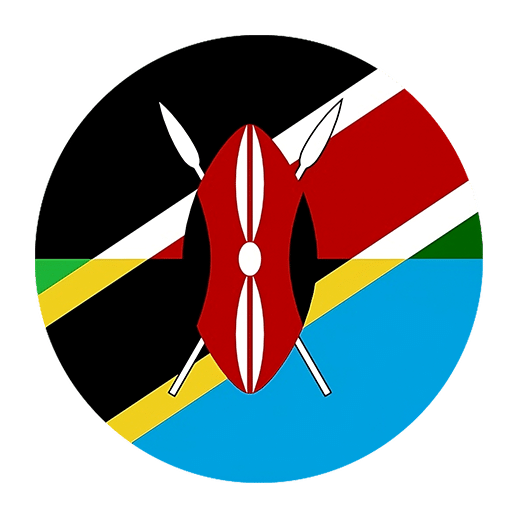Swahili, or Kiswahili as it is known in its native form, is a Bantu language spoken by millions of people across East Africa. As one of the most widely spoken languages on the African continent, Swahili plays a crucial role in various aspects of life, including business, education, and governance. However, one of its most significant influences is in the realm of media. From radio and television to newspapers and social media, Swahili serves as a bridge connecting diverse communities, fostering unity, and promoting cultural heritage. This article explores the multifaceted role of Swahili in East African media, shedding light on its historical evolution, current significance, and future prospects.
Historical Evolution of Swahili in Media
Swahili has a rich history that dates back centuries. Originating from the coastal regions of Kenya and Tanzania, it was initially used as a trade language among diverse ethnic groups and foreign traders. The language’s adaptability and inclusivity allowed it to absorb elements from Arabic, Persian, Portuguese, and even English over time.
The advent of colonialism in the late 19th and early 20th centuries brought about significant changes in the region’s linguistic landscape. British and German colonial administrations in East Africa recognized the utility of Swahili as a lingua franca, and it was subsequently incorporated into educational systems and administrative functions. This laid the groundwork for its later prominence in media.
The first Swahili newspapers emerged in the early 20th century. Publications like “Mambo Leo” and “Baraza” began circulating, providing a platform for news, literature, and public discourse in a language that was accessible to a broad audience. The establishment of radio stations in the mid-20th century further cemented Swahili’s role in media. Radio Tanzania, for example, became a pivotal institution for broadcasting news, music, and educational programs in Swahili, reaching listeners across the country and beyond.
Swahili in Print Media
Print media has always been a cornerstone of information dissemination, and Swahili newspapers and magazines have played a vital role in this regard. Publications such as “Taifa Leo” in Kenya and “Majira” in Tanzania have been instrumental in providing news, analysis, and entertainment to Swahili-speaking audiences.
These newspapers often cover a wide range of topics, including politics, health, education, and culture. By doing so, they not only inform the public but also promote literacy and critical thinking. Additionally, Swahili print media serves as a platform for writers, poets, and intellectuals to express their ideas and contribute to the cultural and intellectual life of the region.
Swahili in Radio Broadcasting
Radio remains one of the most popular and influential media platforms in East Africa, and Swahili plays a central role in this medium. Stations such as Radio Citizen in Kenya, Radio Tanzania, and Radio One in Uganda broadcast a diverse array of content in Swahili, ranging from news and talk shows to music and drama.
The accessibility of radio, especially in rural areas, makes it a powerful tool for reaching a broad audience. Programs in Swahili can bridge the urban-rural divide, ensuring that people from different backgrounds and regions have access to important information and entertainment. Moreover, radio has the unique ability to foster a sense of community by allowing listeners to call in, share their views, and participate in discussions.
Swahili in Television
The rise of television in East Africa has further expanded the reach and impact of Swahili media. Television stations such as Kenya Broadcasting Corporation (KBC), Tanzania Broadcasting Corporation (TBC), and Uganda Broadcasting Corporation (UBC) offer a variety of programs in Swahili, including news, documentaries, soap operas, and educational content.
Television’s visual and auditory appeal makes it an effective medium for storytelling and information dissemination. Swahili television programs often reflect the region’s cultural diversity and social realities, providing viewers with relatable content that resonates with their daily lives. Additionally, Swahili news broadcasts ensure that vital information reaches a wide audience, contributing to informed citizenship and democratic participation.
Swahili in Digital and Social Media
The digital revolution has transformed the media landscape globally, and East Africa is no exception. The proliferation of smartphones and internet access has given rise to a vibrant digital and social media scene, with Swahili emerging as a prominent language in this space.
Social media platforms like Facebook, Twitter, and Instagram have become important channels for news, communication, and cultural expression in Swahili. Influencers, journalists, and ordinary citizens use these platforms to share information, engage in discussions, and promote social causes. The use of Swahili hashtags and trending topics has also amplified the visibility of regional issues on the global stage.
Moreover, digital media outlets such as “Mwananchi Digital” and “Tuko.co.ke” provide online news and multimedia content in Swahili, catering to the preferences of younger, tech-savvy audiences. The interactive nature of digital media allows for real-time feedback and engagement, fostering a dynamic and participatory media environment.
The Significance of Swahili in East African Media
The prominence of Swahili in East African media is not merely a matter of linguistic convenience; it holds profound cultural, social, and political significance.
Promoting Cultural Identity and Unity
Swahili is more than just a means of communication; it is a repository of the region’s cultural heritage. Media content in Swahili often draws on traditional narratives, proverbs, and idioms, preserving and celebrating the richness of East African cultures. By broadcasting in a language that is deeply rooted in the region’s history, media outlets contribute to the maintenance and revitalization of cultural identity.
Furthermore, Swahili serves as a unifying force in a region characterized by linguistic and ethnic diversity. It transcends ethnic boundaries, fostering a sense of shared identity and mutual understanding among different communities. In this way, Swahili media promotes social cohesion and national unity.
Facilitating Access to Information
Access to information is a fundamental right and a cornerstone of democratic societies. Swahili media plays a crucial role in ensuring that this right is upheld in East Africa. By providing news and information in a widely understood language, media outlets make it possible for people from all walks of life to stay informed about local, national, and global events.
This accessibility is particularly important in rural and underserved areas, where literacy rates in foreign languages may be low. Swahili media bridges the information gap, empowering individuals to make informed decisions and participate actively in civic life.
Enhancing Education and Literacy
Media in Swahili also contributes to education and literacy in the region. Educational programs on radio and television provide valuable learning opportunities for children and adults alike. These programs cover a range of subjects, including language, science, mathematics, and health, complementing formal education and reaching those who may not have access to schools.
In addition, Swahili newspapers and digital content promote reading and writing skills. By engaging with written material in Swahili, readers enhance their literacy and critical thinking abilities. This, in turn, has a positive impact on overall educational outcomes and socio-economic development.
Empowering Women and Marginalized Groups
Swahili media has the potential to empower women and marginalized groups by giving them a voice and platform to share their stories and perspectives. Radio programs, in particular, have been effective in addressing issues such as gender equality, health, and economic empowerment.
For instance, radio dramas and talk shows often tackle topics related to women’s rights, reproductive health, and domestic violence, raising awareness and encouraging dialogue. By highlighting the experiences and challenges faced by marginalized communities, Swahili media contributes to social change and advocacy efforts.
Challenges and Future Prospects
While Swahili plays a vital role in East African media, there are challenges that need to be addressed to ensure its continued relevance and impact.
Quality and Professionalism
One of the key challenges facing Swahili media is maintaining high standards of quality and professionalism. This includes ensuring accurate and balanced reporting, upholding ethical standards, and providing comprehensive coverage of diverse issues. Training and capacity-building programs for journalists and media practitioners are essential to enhance their skills and knowledge.
Adapting to Technological Changes
The rapid pace of technological advancement presents both opportunities and challenges for Swahili media. While digital platforms offer new avenues for content distribution and audience engagement, they also require media outlets to adapt and innovate. This includes investing in digital infrastructure, developing multimedia content, and leveraging data analytics to understand audience preferences.
Financial Sustainability
Financial sustainability is another critical concern for Swahili media organizations. Many outlets face funding constraints, which can impact their ability to produce high-quality content and invest in new technologies. Exploring diverse revenue streams, such as advertising, subscriptions, and partnerships, is essential to ensure the long-term viability of Swahili media.
Promoting Media Literacy
As the media landscape evolves, promoting media literacy among the public becomes increasingly important. Media literacy programs can help individuals critically evaluate information, recognize misinformation, and make informed choices about the media they consume. This is particularly relevant in the digital age, where the spread of fake news and disinformation poses significant challenges.
Conclusion
Swahili’s role in East African media is a testament to its power as a language of communication, culture, and unity. From its historical roots in print media to its current presence in radio, television, and digital platforms, Swahili continues to shape the region’s media landscape in profound ways. By promoting cultural identity, facilitating access to information, enhancing education, and empowering marginalized groups, Swahili media contributes to the social, economic, and political development of East Africa.
As the media environment continues to evolve, it is essential to address the challenges facing Swahili media and seize the opportunities presented by technological advancements. By doing so, Swahili media can continue to thrive and play a pivotal role in shaping the future of East Africa. In this dynamic and interconnected world, the importance of Swahili in media underscores the enduring value of linguistic and cultural diversity in fostering a more inclusive and informed society.

